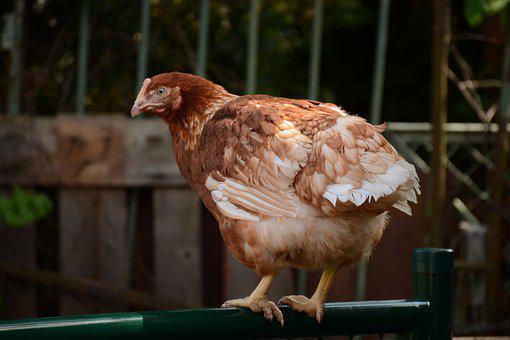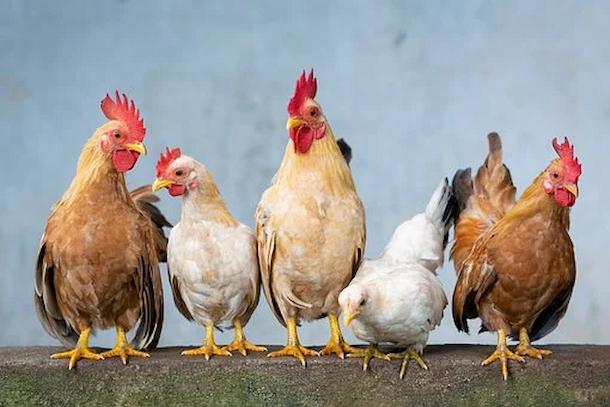Just by looking at a chicken, it can be difficult to determine its exact age. If you recently added some new chickens to your flock but are unsure of their ages, there are some telltale signs and tips you can use to estimate a chicken’s age. Check them out to see what they are.
Table of Contents
How To Tell How Old A Chicken Is
Hatching chicken eggs or purchasing chicks to increase your flock is a lot of fun. You can precisely track the age of your chickens as you watch them develop if you start your flock in this manner. Some individuals decide to purchase chickens that are already laying eggs because they want immediate results from their hens. How can you be sure of the age of your chickens whether you buy from another chicken owner, are bidding on some birds at an auction, or trade with some friends?
The age of your chicken is irrelevant if you don’t care about it. It’s crucial to keep track of your hens’ ages if you want to be able to care for them as they grow older and develop different needs.
How Chickens Age
6 To 8 Days
Baby chicks emerge sticky, but after a few hours they start to fluff up; a hairdryer is not necessary. On the first day, they appear to be the victims of a bad haircut. Even though they have only grown a few feathers, the fuzz will protrude from every direction.
6 To 12 Weeks
The chicks’ real feathers will eventually start to grow. When the full set has developed, you might be able to distinguish between the males and females. Males will differ from females not only in appearance but also in assertiveness, lack of fear, and uprightness of posture.
In the comb, you can see the visual difference. Look for the combs that are larger and stick out higher when comparing the chicks. Check out this YouTube video from The Happy Chicken Coop on how to tell the hens from the cockerels (roosters) if you want to see how this is done.
The Feathering Of Hens And Roosters Will Differ Greatly.
- While hens will have more rounded feathers, roosters will have pointed feathers called hackles around the neck.
- Imagine placing a saddle on a chicken to get an idea of how long and pointed the rooster’s saddle feathers on their backs grow.
- The tail feathers of hens will be extremely simple. Roosters have long, arched-out sickle-shaped feathers on their tails.
Chicken breeds evolve at various ages. The changes in the feathers may not be visible in breeds that mature more slowly until closer to the 12-week point.
Sex Link Chickens
A hybrid chicken breed is called a sex link. Described by Backyard Chicken Coops,
they are the result of crossing two or more chicken breeds. The goal is to produce a chicken that produces more eggs, produces better meat, or exhibits a particular trait, such as better size, temperament, or plumage.
The coolest thing about sex links is that you can tell what sex (or sex they are) on the day they hatch. For chicken farmers, this makes the process of separating the males and females much simpler.
12 To 20 Weeks

Perhaps the term “pullet” is familiar to you. A hen that has not yet begun to lay eggs is known as a pullet. A pullet usually starts laying at about 20 weeks. As soon as 16 weeks after conception, some sex link varieties may start laying. Around 20 weeks, the typical pullet will grow to adult size. When a hen lays her first egg, she transitions from being a pullet to a hen.
There is a way to tell whether a chicken you are buying or receiving is a laying hen or a pullet. You can gently flip the chicken over to measure the distance between her pelvic bones.
At her vent, which is where she releases waste and lays her eggs, you can feel the bones on either side. The distance between these bones will be about two fingers wide if you have a pullet. Egg layers’ bones will have gotten bigger during the egg-laying process. You will be able to fit 3 or 4 fingers between these bones
20 Weeks – 1-year-old
Your chickens are now developing into mature adults. Most likely, the hens will lay one egg per day, and the roosters will chase the hens. Be aware of any scars because some hens may sustain injuries while being chased.
It’s wise to separate them if that begins to happen. Typically, your chickens reach their adult weight by the time they are a year old. Their combs and wattles will be bright red.
1 – 3 years old
Your chickens’ first molt will occur sometime after they turn one year old. They’ll molt their feathers, and new ones will grow in their place. It will keep them warm, and the roosters will find them more alluring due to their brand-new, shiny feathers.
The spurs on roosters will develop during this period. The chickens’ legs thicken; they become rougher and paler. Additionally, they exhibit much more consistent behavior. They are accustomed to acting like adults and carrying out all of the functions of chickens their age!
3 – 5 years old
Hens typically stop producing eggs after about 4-5 years, even though they are not yet considered old at the age of 3. Their vent is becoming drier and paler, as you will see. Prior to completely ceasing production, the egg production will first begin to decline.
Its legs, wattles, and beak will lose color. As their enthusiasm for mating gradually wanes, roosters’ sperm will lose some of its potency. For a while, he will be able to reproduce, but only three or four chickens can be fertilized by him. A definite indication that a rooster is past their prime is when their legs, wattles, and beaks start to lose their color.
5 years old And Older
Chickens over the age of five stop reproducing and stop producing eggs. Although it is difficult to determine their exact age, they behave much more subdued and sleepy.
They’ll start to move less and less, and their feathers will start to look unkempt. They may appear stressed and exhausted. Their mood also changes. Their eyes also droop a little. A chicken can live for eight to ten years if it is given the proper care.
How To Take Care Of Chickens Depending On Their Age
When you first start raising chickens, you might feel unprepared for the responsibility of providing for their needs. You don’t need to think that, though! Even as young chickens, they require little maintenance. Learn how to care for chickens according to their age by heeding the next piece of advice.
Baby Chickens
It’s not difficult to care for baby chickens if you’ve brought them into your household, so don’t worry if you’re unsure how to do it. Your chickens need regular care until they can stand on their own because they are vulnerable and weak when they are up to six weeks old.
If you want to check on them more frequently, you can choose to keep them in your home, or you can put them in a barn. In either case, you require a brooder box. You can either purchase one or make one yourself. Make sure it’s not too small so the chickens can feel at ease inside.
You should then give them appropriate bedding, such as hay or wood shavings. They will stay warm and cozy as a result. They are still too small to control their own body temperatures, speaking of warmth.
You will need to replace the mama hen with a heat lamp because they lack that capability. Use a thermometer to regulate the temperature properly. It should be about 95 degrees Fahrenheit. Reduce the temperature by 5 degrees after the first week.
In the following weeks, the same applies. Pay attention to how they act; if they become too hot, they should be able to escape the brooder box. They will try to huddle up together if it is too cold. Accordingly, change the temperature.
Last but not least, they must constantly have access to clean water and food. As soon as they are four to six weeks old and have grown all of their feathers, they should remain in their brooder box.
Until They Are Five-years-old
There is no need for special care once your chickens’ feathers have grown out and they begin to lay eggs. They are all adults and no longer require a heat lamp, so they mainly look after themselves.
Make certain they have a spotless coop, clean food, and fresh water. Spend time with them every day, and at least once a month, change their bedding. Regular observation will make it simple for you to spot any problems or illnesses.
Old Chickens
Your chickens will stop laying eggs around the age of five, and you’ll be able to tell they’re getting older from the way they look. Despite not producing eggs, they can still be a useful addition to your backyard. Their manure is a great fertilizer for the soil, and they enjoy eating bugs and snails.
They also make such adorable pets! It’s easy to take care of them. Older chickens require a few extra things in addition to fresh food and water, routine coop cleaning, and bedding replacement.
They can have difficulty moving around easily because they are prone to arthritis at this age. Make a ramp out of the stairs in your barn if there are any. If their nails grow too long, be sure to trim them since they are unable to do so on their own. In case they become ill, consult with the vet frequently and be aware of any changes.
Conclusion
In most cases, it is impossible to determine a chicken’s exact age. However, based on how they act and look, you can tell what stage of life they are in. It’s best to purchase young chickens or pullets if you intend to purchase chickens and raise them. Their long and happy lives depend on us taking good care of them according to their age.
